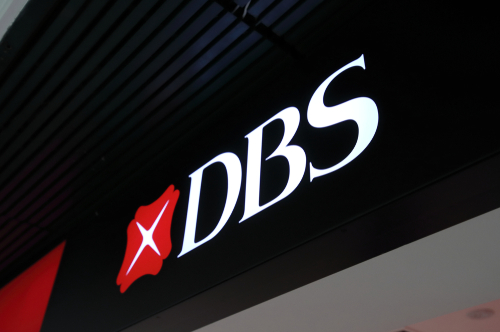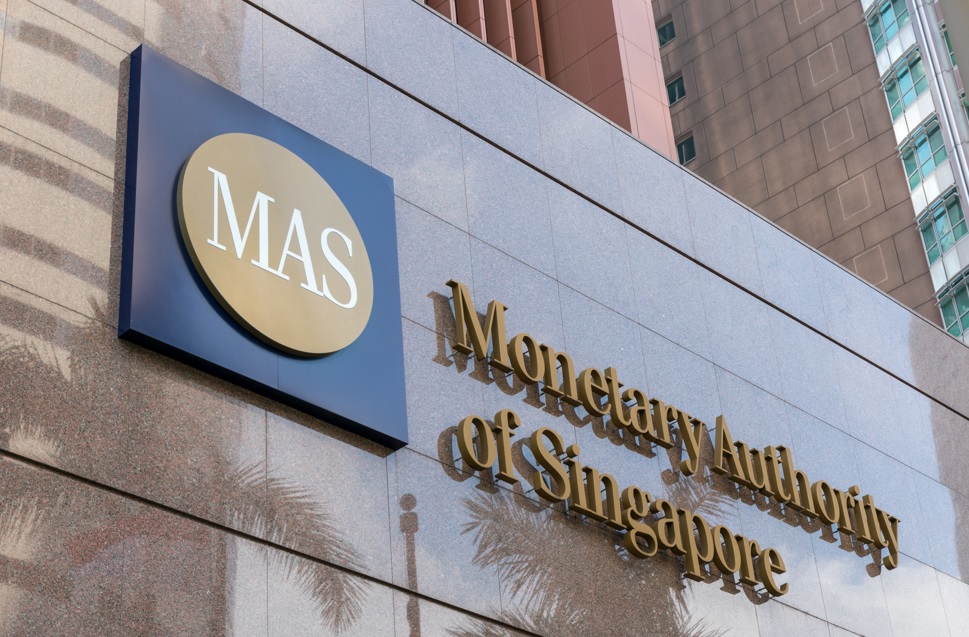
Unter dem wichtigen Widerstand bei 60.000 US-Dollar warten Trader immer noch darauf, dass der RSI der Kryptowährung sich wieder erholt.

Krypto minen, NFT minten, Gold schürfen und Geld drucken

Unter dem wichtigen Widerstand bei 60.000 US-Dollar warten Trader immer noch darauf, dass der RSI der Kryptowährung sich wieder erholt.

We have seen several cryptocurrencies linked to the increasingly interesting Metaverse space make huge gains in recent weeks. Projects such as The Sandbox (SAND), Decentraland (MANA), and Enjin Coin (ENJ) have witnessed an upside driven by investor interest in the concept of a Metaverse.
Crypto and blockchain projects could be among those to benefit massively from the idea, but according to DBS senior investment strategist Daryl Ho, investors could do well to look at two key sectors likely to play a big role as the initiative takes shape.
In an interview with CNBC’s “Squawk Box,” Ho said that companies and platforms that are already deep in the digitisation space could have the front seat when it comes to defining the Metaverse and thus benefitting the most.
“If you don’t already realize it, we are already moving somewhat towards a digital world, so the Metaverse is simply the next step, the next frontier,” Ho explained.
Recently, Meta Platforms (formerly Facebook), took a giant step in announcing plans for developing the Metaverse, and major companies around the world are looking to follow suit as the reality of a virtual world grows.
It’s with this perspective that the investment strategist says two particular sectors could take the lead and be highly profitable to investors.
He believes the computer gaming industry has the upper hand here, given the sector is already immersed in the virtual world. Notably, it’s in the Metaverse would see people live, work and collaborate and gaming platforms have represented this in many ways in their gaming projects.
“I think these are the companies [investors] should look out for,” he said, adding that the sector is likely to be the one that “shape[s] the metaverse as we know it.”
Ho also believes that big technology companies have all it takes to maintain a leading role in the Metaverse and will be big beneficiaries.
Apart from Meta, other Big Tech companies to watch out for are Google, Apple, Microsoft and game company Valve.
The post DBS Bank strategist: Watch out for gaming and Big Tech in Metaverse appeared first on Coin Journal.

Microstrategy CEO Michael Saylor says in the end, the battle between Bitcoin and gold will be decided in digital gold’s favour.
In an interview with CNBC’s ‘Squawk Box’, Saylor noted that Bitcoin’s growth is set to see it become a $100 trillion asset class, with the 100x increase in its market capitalisation setting it ahead of traditional store of value gold.
Microstrategy is one of the mainstream companies that hold a significant share of Bitcoin since making its first purchase in 2020. The company is set to add to its current haul of 114,042 BTC, Saylor revealed during the interview.
According to him, the strategy is to “keeps stacking forever”, which implies buy more BTC whenever the opportunity to do so appears. He said that the next ten years will see the flagship cryptocurrency explode amid massive investor adoption, even as monetary indexes across the globe collapse.
A figure that is quickly becoming a respected voice in the Bitcoin community, Saylor believes BTC is on the path to toppling gold.
He added that the trajectory that the cryptocurrency is on will continue in the digital gold’s favour, with the precious metal set to be overtaken this decade.
He said:
“At the end of the decade it will have flipped gold, and then it will flip monetary indexes, a little bit of bonds, a little bit of real estate, a little bit of equity, and emerge as a $100 trillion asset class. So, 100X of where it is right now.”
This, he said, will happen despite the potential for regulatory headwinds. He points to some countries banning crypto or instituting regulations that limit investors.
In his view, there is no other asset class that would beat Bitcoin if an institution wants a safe haven asset. It is Bitcoin that offers the “ethical, technical, and legal safe haven” status that institutional investors want, he added.
Saylor also says the next ten years could see Bitcoin make up 5% to 7% of the global economy. In this time, the US dollar could have replaced most of the world’s national currencies, with the euro and the Chinese Yuan the only other global currencies.
Bitcoin, which plunged to a seven-day low of $55,861 this week, has recouped about 4% of the losses in the past 24 hours. At the time of writing, BTC is changing hands around $59,987, with intraday highs of $60,324 according to data from CoinGecko.
Gold, on the other hand, slipped 0.73% to close at 1,846.02 on 19 November.
The post Microstrategy CEO says Bitcoin is winning, gold is losing appeared first on Coin Journal.

The top cryptocurrencies grabbed headlines this week following a market-wide market tumble that saw over $250 billion wiped off the sector
Bitcoin slid below $60,000 early on Tuesday and despites effort to bounce back, the crypto coin continued bleeding and is now trading around $58,000. Ether followed a similar path dropping to around $4,200. Both tokens are currently trading in the red and are 8.31% and 7.75% down in the last 7-days respectively.
Here is a breakdown of other exciting events outside the market.
In a week where a parliamentary panel concluded that cryptocurrencies would not be banned but instead be regulated, it has also come out that India is planning to launch a CBDC pilot program early next year. On Monday, a group of crypto experts from various areas, including the IIM Ahmedabad, the Blockchain and Crypto Assets Council (BACC), and top crypto exchanges, met with the Parliamentary Standing Committee on finance.
The meeting led by BJP MP Jayanth Sinha discussed the crypto situation and concluded that crypto cannot be stopped but will rather be regulated. No specific body was however tasked to manage and oversee the sector.
On Thursday, reports confirmed that India could as soon as Q1 2022 launch a CBDC pilot program. P. Vasudevan, the chief general manager at the Department of Payment & Settlement of the Reserve Bank of India, was quoted saying this, adding that the central bank was also exploring “various issues and nuances related to CBDC.”
Speaking at an online event hosted by the Australian Strategic Policy Institute on Thursday, Prime Minister Modi took a combative approach when talking about crypto. He complained that crypto, more particularly Bitcoin was a threat to the younger population. This was not the first time the Prime Minister was expressing discontent. Just this month, he led a meeting that resolved that the youth should be protected from overpromising and false advertising on cryptocurrencies.
Facebook’s ripple effect is still seemingly being felt in the crypto space. Towards the end of last month, the social networking firm paved the way for a spree of investments by several firms entering the metaverse. The announcement and resultant transformation saw startups raise more than $4 billion in an attempt to rival contemporary big tech in the idea of a metaverse.
For the first time, Gemini’s twin-brother owners received external capital into their company with the $400 million raise that saw the crypto exchange’s valuation rise to a significant $7.1 billion. The pair, Tyler and Cameron Winklevoss, will still retain a huge chunk (75%) of ownership of the firm. Morgan Creek Digital led the round, with other financiers, including the Commonwealth Bank of Australia, ParaFi, and Marcy Venture Partners also taking part.
A fraction of the funding will be aimed at investment into the metaverse with part being used to expand the company’s geographical reach. The Winklevoss brothers have popularly in the past challenged Facebook boss Mark Zuckerberg and will be seeking to go head-to-head with his company’s planned metaverse.
In a Forbes interview published yesterday, Tyler Winklevoss said that the firm’s strategy would be to spread itself across several metaverses. In addition to offering exchange services, Gemini also has $30 million of crypto assets under its custody. The exchange also runs an NFT marketplace and facilitates users to lend their crypto.
This week saw a series of fundings by venture capital firms, and one of the highlights was Paradigm’s $2.5 billion raise. The investment firm unveiled the fund on Monday, and with the firm having a keen eye on Web3 applications and protocols of the future, it plans to put the money into supporting innovation and incubating ideas. The invested capital is expected to support the next generation of crypto companies.
Elsewhere, the Anoma Foundation on Wednesday confirmed that it had raised $26 million at a $260 million valuation. The round was led by California-based Polychain with additional participation from Zola Capital, Maven 11 Capital, Electric Capital, Fifth Era, and others. The funding will help the firm acquire the services of Heliax – a group of developers – to help grow the protocol further.
On the same day, blockchain technology company, ConsenSys revealed via a blog post that it had raised $200 million at a $3.2 billion valuation. The firm plans to use the capital in making Web3 applications around Ethereum much more accessible and easier to use. The investors involved in the raise included HSBC, ParaFi, Coinbase Ventures, Animoca Brands, and Dragonfly Capital.
This week, Binance published a detailed list of rights for cryptocurrency investors and users. The world’s largest crypto exchange set the rules in what was a remarkable turnaround. Binance was largely surrounded by regulators in various countries over the last few months.
The exchange pulled off what was its first-ever publication on traditional media – a full page of the fundamental rights on the Financial Times, complemented with a web posting. The rights touched on the idea that crypto was good for all, but it still needed to be worked on. Binance advocated for a more regulated crypto space to assure the ordinary user’s protection, which is something the regulators want to hear.
The document, 10 Fundamental Rights for Crypto Users, detailed what Binance believes to be the required market ideals and user rights. It reviewed economic independence, allocated responsibilities, called for user privacy, talked of the inevitability of crypto regulation, among other issues.
Binance CEO Changpeng Zhao, on his part, told Bloomberg that face-to-face meetings with regulators had helped change the regulatory view on his exchange. He further added that the exchange had been engaging with regulators about what is important in regulating crypto, and it was only now sharing the information with users.
The post Weekly Report: India looking to transform its crypto sector, potential CBDC trial run on the way appeared first on Coin Journal.

The exchange will, in the next few weeks, be working to secure a Major Payment Institution license
Singapore -based crypto exchange Coinhako confirmed on Tuesday that it had received in-principal approval from the Monetary Authority of Singapore (MAS) under the Payment Services Act (PSA) to offer digital payment token (DPT) services. The approval makes Coinhako the first local non-bank exchange to get the license.
Coinhako’s Director of Corporate Development Collin Cheong applauded his team, saying it had worked so hard to ensure the business’ structure remained compliant in the years leading to this approval. He added that receiving the green light was a testament to their effort.
Consequently, Coinhako will be working leading into the next few weeks to satisfy the monetary authority’s requirements to gain a Major Payment Institution license in the country. With such authority, the exchange would be able to fully provide DPT services to its users.
The Major Payment Institution license is a requirement in the Asian country for firms seeking to transact any DPTs, including cryptocurrencies. Further, those seeking to facilitate users to exchange DPTs are also required to hold this license.
“Singapore has always been at the forefront of fintech innovation. The regulation of DPTs under the Payment Services Act is a clear indication of our nation’s readiness to nurture innovations in the digital assets and cryptocurrency space while balancing the need to protect consumer and social interests,” noted Yusho Liu, co-founder and chief executive of Coinhako.
Founded in 2014, Coinhako offers users the ability to trade in fiat-to-crypto and crypto-to-crypto. The exchange has recently seen some tremendous growth, recording a 1000% increase in the number of users in the first eight months of the year, compared to the whole of last year. The exchange holds over 300,000 registered users, also recording 150,000 monthly active ones.
The growth that Coinhako has experienced isn’t what one would call secluded. In fact, the general Asia Pacific has generally seen quite the boom in users seeking to adopt cryptocurrencies. Findings of a recent MasterCard survey revealed that the region has 45% of consumers wanting to use crypto within the next year. This figure is 5% higher than the global average.
Supported by strong investors in the crypto sector, such as Boost VC and Tim Draper, Coinhako has launched a number of initiatives in the crypto sector. On October 19, the crypto exchange flagged off the Privé platform, intended to provide digital asset services to institution-grade clients and high-level markets. The exchange also recently played host to an event for Singapore’s first-ever large-scale NFT gallery. The event, ‘Right Click + Save’, saw international interest attracting several parties.
The post Crypto exchange Coinhako secures in-principle approval from MAS appeared first on Coin Journal.